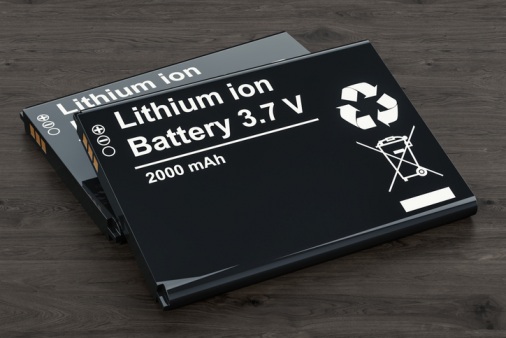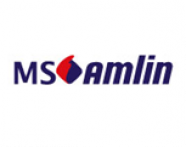The risks of lithium-ion batteries

Authored by MS Amlin
The use of lithium-ion batteries is increasing rapidly. These batteries can cause significant hazards with regard to fire and safety risks. Whilst there are protection systems and tools available to mitigate the risks, it is important to understand how these tools operate, so you can be sure that the protection systems are a correct match for the failure modes of a particular battery system.
Containing or extinguishing lithium fires in large battery packs is difficult and expensive. At the time of writing this circular, there is still no official type approval, nor any legislation, for the use of lithium-ion batteries in a marine environment.
With this circular, MS Amlin hopes to build further awareness of the dangers and risks associated with lithium-ion batteries, by offering you information and some practical recommendations. We would like to thank Arnold Warmerdam, Senior Risk Consultant at Halyard Risk BV for his contributions.
Lithium-ion batteries
Lithium is a chemical element with the symbol Li and atomic number 3. It appears as a soft, silvery-white alkali metal. In lithium-ion batteries, the anode exists out of carbon and the cathode out of lithium metal oxide. The electrolyte between the electrodes consists of organic carbonate compounds, such as ethylene carbonate, to which lithium complexes are attached.
Lithium-ion batteries have rapidly emerged in the automotive industry and are now becoming more popular on mega motor and sailing yachts, smaller yachts, tugs, ferries, offshore industries and even on mobile cranes.
The risks
Lithium fires
Lithium, like all alkali metals, is highly reactive and flammable. A lithium fire can be recognised by its brilliant silver flame. Furthermore, lithium can ignite and is potentially explosive when exposed to air and water. The core of a lithium-ion fire is the cell itself which is very difficult to reach and even harder to extinguish due to having multiple elements of fire types (metallic, chemical, etc.). It also releases energy to its surroundings and can potentially produce its own oxygen.
A single cell fire can be contained, but a fire in a complete battery made up of tens of thousands of cells can result in an uncontrollable event, as the fire can easily spread to additional cells. The location where a fire took place is likely to be filled with toxic gases. The gases identified so far are carbon monoxide, nitrogen dioxide, hydrogen chloride, hydrogen fluoride, hydrogen cyanide, benzene and toluene. This means all protocols for entering enclosed spaces must be strictly followed.
Thermal runaway
Another risk is thermal runaway. Lithium-ion batteries can blow-up or melt when internal electrical components short-circuit. For example, this can occur due to mechanical problems after an accident, or when the batteries are not installed correctly. Often the cause of these failures is when one portion of the battery gets too hot and cannot cool down quickly enough. This creates a chain reaction generating more and more heat. This snowball effect is called thermal runaway. During thermal runaway, the separate battery modules melt, creating heat and as a result the electrolyte material between the anode and the cathode may start to boil. The thermal runaway will eventually cause the battery to self-ignite.
Safety
Lithium technology has existed for over 25 years. As a result of numerous casualties involving lithium batteries, safety standards have been developed and in recent years, safety features have been added to the battery cell. The most frequently used measures are summarised below.
Battery Management System (BMS)
The BMS protects a cell by cutting the power and regulating the charging of the cells. The BMS can detect a short circuit in the components and is also capable of resolving other hazards which may cause a thermal runaway or self-ignition.
Software
Eliminating the risk of battery failure by using specialist software can quickly alert the parties to a real-time risk. This can be very beneficial but it’s important to note that any software must be tested at the same time as the hardware to determine the risks of full system failures.
Liquid and air cooling
Liquid and air cooling are the only safety systems currently tested and proven to prevent thermal runaway. These active cooling systems prevent batteries from entering thermal runaway by simply extracting more heat than the cells can produce.
Early detection system
The fire suppression, detection and release systems still need to be fully functional after a single failure in another subsystem such as the BMS.
Injection of foam
Compared with the other tested methods, direct injection of foam shows the best heat mitigating results. This method has the highest potential for module-to-module fire mitigation, especially when it is designed to flood the modules/racks over longer time periods. In cases where alternative ship integration concepts are to be evaluated, such as a battery installed without a dedicated battery room, this may be a particularly attractive approach to maintain a high level of safety.
High pressure water mist protection
High pressure water mist protection provides good heat mitigation at module level, as well as full battery space protection from external fires. It also has good gas absorption and gas temperature reduction capabilities.
NOVEC 1230
NOVEC 1230 extinguishes the battery fire flames but performs poorer against heat mitigation, gas temperature reduction and gas absorption when compared to water mist. Room ventilation needs to be closed for this suppression method to be functional. This can increase the toxic and explosive battery gas concentration in the room until ventilation can start again.
Sprinklers
Sprinklers do not extinguish the visible flames, instead they mitigate heat by spraying high-pressure water mist. The downside to this method is that the water can displace the gas into pockets with high concentrations, which in-turn could increase the explosion risk.
Total flooding
Flooding the battery pack is only possible when this method is incorporated during the design phase of the vessel. This is to ensure bulkheads and stability have been correctly calculated. It’s important to note that no other vital units should be in these compartments.
Testing and audits
Each battery installation requires assessment of safety particulars in consultation with the battery manufacturer to identify the application most suited for that project. Due to the limited amount of available suppression media onboard a vessel, the actual volumes and release rates need to be calculated and are dependent on the battery system
Tests, witnessed by the classification societies and experts in the field, must be performed at both cell and multi-cell levels. The results provide information on the amount of ventilation and the effectiveness in the design phase. Knowledge gained from these tests enables suppliers, audited by the classification society, to deliver and install a safe product. During different building phases of a new vessel, gas relief openings, locations, fire bulkheads and firefighting equipment means should be checked and evaluated by the classification society.
This is lithium polymer battery.
Case study
The passenger ferry MF Ytterøyningen was delivered in 2006 and was equipped with a Corvus Orca Energy Storage System (ESS) with 1989 kWh capacity. On 10 October 2019, a small fire in the battery room of the passenger ferry was reported. She returned to port by herself, here all passengers and crew were evacuated. Overnight however, a serious gas explosion occurred in the battery room which caused significant damage. It was reported that twelve firefighters were taken to the hospital for exposure to hazardous gases associated with the batteries.
“We recommend that all shipowners with vessels that have battery installations, carry out a new risk assessment of the dangers connected to possible accumulations of explosive gases during unwanted incidents in the battery systems,” the Norwegian Maritime Authority said in a statement.
British Columbia-based, Corvus Energy, which supplied the ferry’s battery system, has also issued recommendations to operators not to sail without communication between the shipboard energy management system and the battery packs, as well as what to do in the event of a gas release or “thermal runaway” situation.
Following the battery fire on MF Ytterøyningen, the following important recommendations were issued:
Do not sail without communication between engine management system (EMS) and the battery packs’ Management System (BMS). Keeping the packs powered up will maintain this communication link. An unpowered pack cannot communicate important system data (faults, warnings, temperatures and voltages) to the EMS/bridge. Ensure that current ESS parameters are showing at the EMS interface. This is a verification of the communication link.
Do not power down the battery equipment if a gas release, thermal runaway situation or fire in the battery room is suspected. All of this has major implications for both Norwegian ferry operators and operators worldwide who are increasingly turning to hybrid diesel-electric or fully electric power for vessels.
All of this has major implications for both Norwegian ferry operators and operators worldwide who are increasingly turning to hybrid diesel-electric or fully electric power for vessels.
Conclusions and recommendations
- Thermal runaway occurs due to a battery cell failure. This generates an increase in temperature, creating a chain reaction in which more energy is released. This reaction causes the electrolyte to break down into flammable gases, which in-turn triggers the fire with oxygen and can result in an uncontrolled situation, often leading to a destructive result. Once the process has begun, temperatures rise rapidly (within milliseconds), creating temperatures of around 400°C.
- The study on fire extinguishing and fire prevention technologies for lithium-ion batteries has become an important part in the field of fire science.
- Recent studies on fire extinguishing methods for lithium-ion cells/batteries include mainly water, foam, dry powder, carbon dioxide and water mist. Water and foam have proven to be most effective. In view of the future widespread use of lithium-ion batteries in the industry, the use of large quantities of water needs to be further investigated by shipbuilders, engineers and classification societies. This is especially important in relation to the strength of bulkheads, choice of materials, pump systems and stability.
- Furthermore, constant vigilance is required and all parties involved should cross check the work performed and test systems that are in place. It is very important to constantly monitor the registration and alarm systems closely, in order to react immediately and prevent thermal runaway.
This circular has been produced in co-operation with Halyard Risk BV and is meant for guidance purposes only. Should you require more information or assistance, CLICK HERE, leave a message and youTalk-insurance will pass you enquiry on.
About MS Amlin
MS Amlin is a leading global specialty commercial insurer and reinsurer with operations in the Lloyd’s, UK, Continental European and Bermudian markets.
Comprising Mitsui Sumitomo’s London and Bermuda-based operations and the historic Amlin businesses, MS Amlin specialises in providing insurance cover for a wide range of risks to commercial enterprises and reinsurance protection to other insurers around the world.
It is wholly owned and fully supported by the financial strength and scale of MS&AD of Japan, the eighth largest non-life insurer in the world. To learn more, visit www.msamlin.com.

